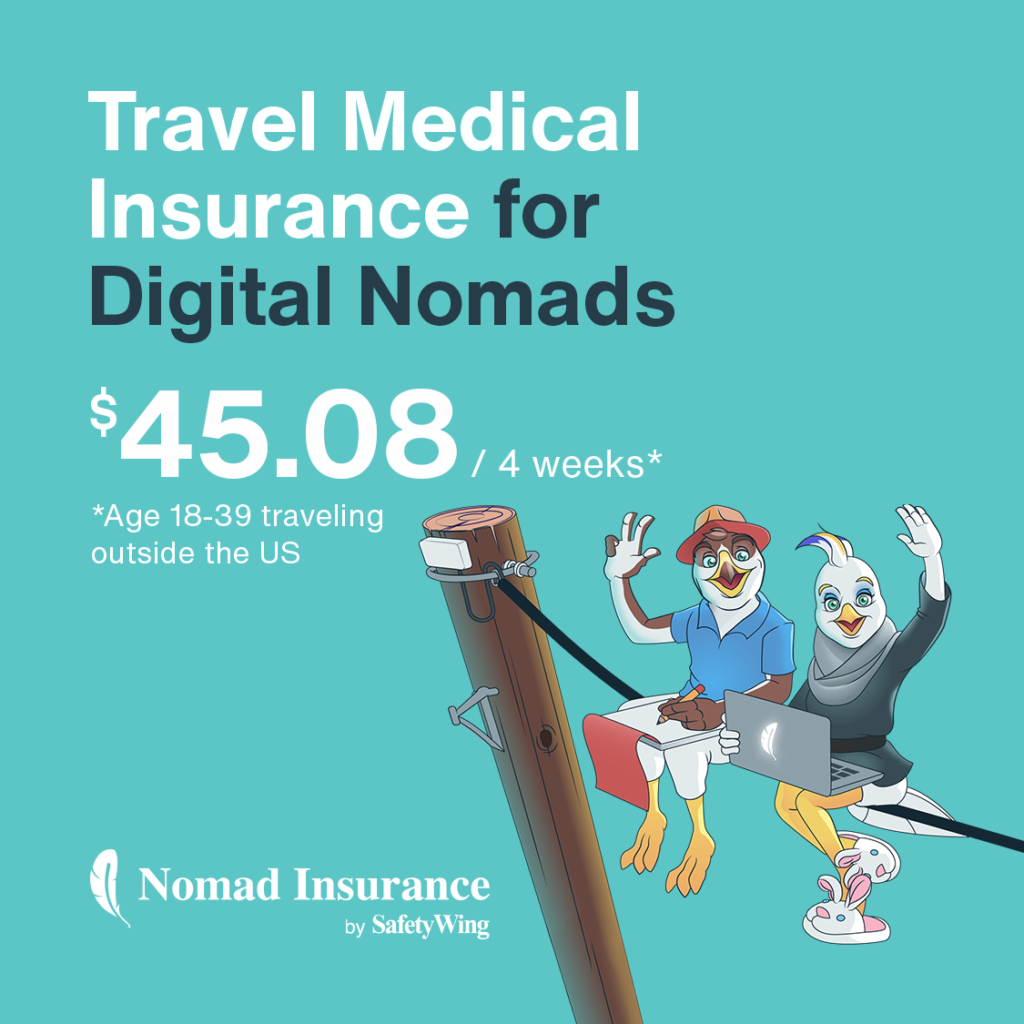If you’re a travel blogger, a travel agent, or a travel business owner, then you probably know how important it is to have a great travel itinerary. After all, your itinerary is what helps you plan and book your trips, and it’s also what helps you keep track of your travels.
So, how do you write a great travel itinerary?
In this guide, we’ll teach you how to write a travel itinerary for your website, blog, or business.
We’ll cover everything from choosing the right format to creating an informative and visually appealing itinerary.
Ready to learn how to write a travel itinerary? Let’s get started!
Choosing The Right Format For Your Itinerary
The first step in writing a travel itinerary is to choose the right format and structure. You need to make it as easy as possible for your readers.
Here’s what to keep in mind:
- How many days will you be covering with your itinerary
- How many details do you wish to provide
- How can you provide more value to your readers
Once you know precisely what you wish to provide to your readers, you’ll need to structure your itinerary.
- Introduction
- Overview (optional)
- Detailed information for each day (morning, afternoon, evening)
- Extra tips or information (recommended hotels or activities)
- Conclusion
Let’s see each section in detail.
The Introduction
The introduction of your itinerary should be short, sweet, and to the point. After all, you don’t want to bore your readers before they even get to the good stuff.
In your introduction, you should:
- Briefly describe what the itinerary will cover
- Include the number of days or nights
- Mention any special events that will be taking place
- Give a brief overview of the itinerary’s highlights
For example:
Planning on visiting Los Angeles? This 3-day itinerary will take you to the best sights and attractions in Los Angeles. From iconic Hollywood landmarks to world-famous museums, there’s something for everyone in LA.
The Overview
After the introduction, you may want to provide an overview of the itinerary. This is especially helpful if your itinerary covers multiple days or a large area. The overview or summary is optional, but it’s an excellent way for your readers to know what to expect.
In the overview, you should:
- Briefly describe the activities for each day
- Include a map of the area (if possible)
- Mention any transportation changes
- Give an estimated budget for the trip
For example:
Day 1: Arrive in Los Angeles and check into your hotel. Spend the afternoon exploring Hollywood Boulevard and visit some of the famous landmarks. In the evening, have dinner at one of the many restaurants on Melrose Avenue.
Day 2: Start the day with a visit to the Griffith Observatory. Then, head to Downtown LA and explore the area around Olvera Street. In the afternoon, visit the Santa Monica Pier and spend some time at the beach. End the day with a walk through Venice Beach.
Day 3: On your last day, visit some of LA’s world-renowned museums like the Getty Center or the Los Angeles County Museum of Art. Then, grab lunch at one of the many food trucks in Koreatown. Before leaving LA, don’t forget to get a picture of the Hollywood Sign!
Detailed Information For Each Day
After the introduction and overview, it’s time to get into the nitty-gritty details of your itinerary.
For each day, you should:
- Include a detailed schedule of activities
- List the addresses or locations of each activity
- Include any important information (opening hours, admission prices, etc.)
- Provide links to websites or additional resources
For example:
9:00 AM – Start the day with breakfast at your hotel
10:30 AM – Walk to Hollywood Boulevard and explore the area
12:00 PM – Visit Grauman’s Chinese Theatre and take a picture of your favorite star’s handprints
1:00 PM – Grab lunch at In-N-Out Burger
2:00 PM – Walk to the Hollywood Sign
3:00 PM – Visit the Hollywood Museum
4:30 PM – Head back to your hotel and relax for a bit
7:00 PM – Have dinner at The Grove
In the example above, you get an itinerary set by hours, but you could also write text if you prefer.
For example:
After breakfast at your hotel, walk to Hollywood Boulevard and explore the area. Visit Grauman’s Chinese Theatre and take a picture of your favorite star’s handprints. Grab lunch at In-N-Out Burger before walking to the Hollywood Sign. Then, visit the Hollywood Museum before heading back to your hotel. In the evening, have dinner at The Grove.
Extra Tips Or Information
At the end of each day, you may want to include a section for tips and recommendations. This is where you can share your insider knowledge with your readers and help them make the most of their trip.
In this section, you should:
- Give your recommendations for restaurants, bars, or cafes
- Mention any insider tips (like the best time to visit a certain attraction)
- Include any important information (like phone numbers or transportation schedules)
For example:
Extra Tips:
If you’re visiting Hollywood Boulevard, go early in the morning to avoid the crowds.
If you want to get a picture of the Hollywood Sign, the best place to do it is from Griffith Observatory.
There are many great restaurants on Melrose Avenue, but if you’re looking for something cheaper, In-N-Out Burger is a must-try!
The example above provides tips for visiting specific attractions, but you could also give general tips for your readers.
For example:
Extra Tips:
Los Angeles is a huge city, so it’s best to plan your days in advance.
If you’re visiting in the summer, don’t forget to pack sunscreen and a hat!
Public transportation in Los Angeles can be confusing, so it’s often easier to just rent a car.
Conclusion
Once you’ve covered all the days of your itinerary, you should end your guide with a brief summary and some final tips.
In your conclusion, you should:
- Thank your readers for following your guide
- Give a brief overview of your itinerary
- Include any final tips or recommendations
For example:
Thank you for following my 3-day Los Angeles itinerary! I hope you had a great time exploring all that the city has to offer. From Hollywood Boulevard to the Santa Monica Pier, there’s something for everyone in LA.
If you have any extra time, I recommend visiting some of the other great attractions that Los Angeles has to offer, such as Disneyland, Universal Studios, or Rodeo Drive.
I hope you enjoyed your trip and that this guide was helpful. Thanks again and safe travels!
How To Come Up With A Unique Travel Itinerary For Your Website
If you’re running a travel website or blog, one of the best ways to attract readers is to come up with unique and exciting itineraries.
People love reading about new places to visit, and if you can provide them with a detailed plan for how to spend their time, they’ll be more likely to trust your judgment and follow your advice.
Creating a great travel itinerary takes time and effort, but it’s worth it to invest that time up front.
Once you’ve created a few helpful itineraries, you can re-use them again and again, and they’ll continue to bring in new readers for years to come.
Here are some tips for creating unique and exciting travel itineraries for your website.
1. Do Your Research
The first step to creating a great itinerary is to do your research.
You need to have a good understanding of the destination before you can start planning an exciting trip. Read up on the history, culture, and attractions of the area.
Having a good understanding of the destination is going to help you figure out how many days are needed.
2. Find Hidden Gems
The best itineraries are the ones that include hidden gems that most people don’t know about.
Do some digging to find unique attractions, restaurants, and activities that will make your itinerary stand out.
Talk to locals and ask for their recommendations. Read travel forums and see what other people are saying about the destination.
The more unique and interesting your itinerary is, the more likely people are to want to follow it.
3. Plan For Different Types Of Travelers
When you’re creating an itinerary, it’s essential to keep in mind that not everyone wants to do the same things.
Some people might want to spend their time sightseeing, while others might want to experience the nightlife or go on outdoor adventures.
Try to include something for everyone in your itinerary. This will make it more likely that people will actually use your itinerary and recommend it to others.
Alternatively, make your itinerary for a specific audience. For example, if your itinerary targets outdoor lovers, include plenty of activities like hiking, biking, and camping.
4. Create An Itinerary That Is Easy To Follow
No one wants to read an overly complicated itinerary.
Keep your itineraries simple and easy to follow. Include all the necessary information, like addresses and website links, but don’t try to cram too much into one itinerary.
It’s better to create multiple shorter itineraries than one long, complicated one.
You’ll need to keep everything in mind (time of arrival, time of departure, the distance between attractions, etc.) to ensure the itinerary is easy for people to follow.
Make sure your itinerary follows a logical route and that attractions are close to each other. No one wants to spend hours on public transportation or walking between attractions.
5. Use High-Quality Images
Make sure to include plenty of high-quality images in your itineraries.
People are visual creatures and want to see what they’re going to be doing on their trip.
Use images to break up the text and make your itineraries more visually appealing.
Include images of the attractions, restaurants, hotels, and anything else that you recommend.
6. Use SEO-Friendly Keywords
When you’re writing your itineraries, make sure to include plenty of keywords that people might use when searching for a travel itinerary.
For example, if you’re creating an itinerary for a trip to New York City, some possible keywords could be “New York City travel itinerary” or “3-day New York City itinerary.”
Including these keywords will help your itineraries show up in search results and make it more likely that people will find and follow them.
If you’re new to SEO, have a look at our SEO services for travel websites.
We offer SEO services for travel businesses and travel bloggers.
Final Thoughts On Writing A Travel Itinerary
Creating a travel itinerary can be a great way to share your knowledge about a destination and help others plan their trips.
By following the tips in this article, you can create an itinerary that people will actually want to follow.
We hope our itinerary examples have been helpful.
Need help with SEO? Read one of the following guides:






